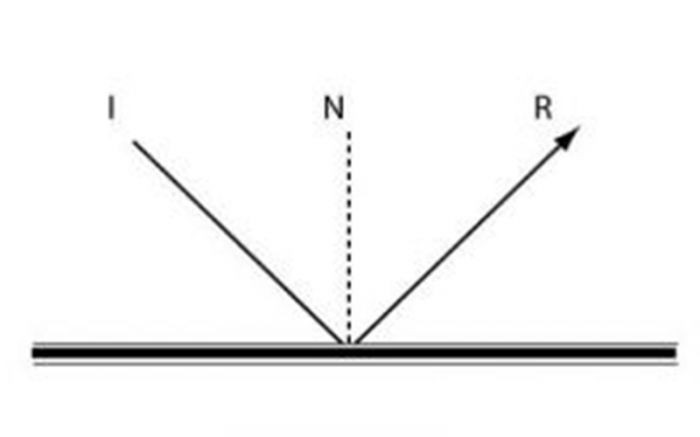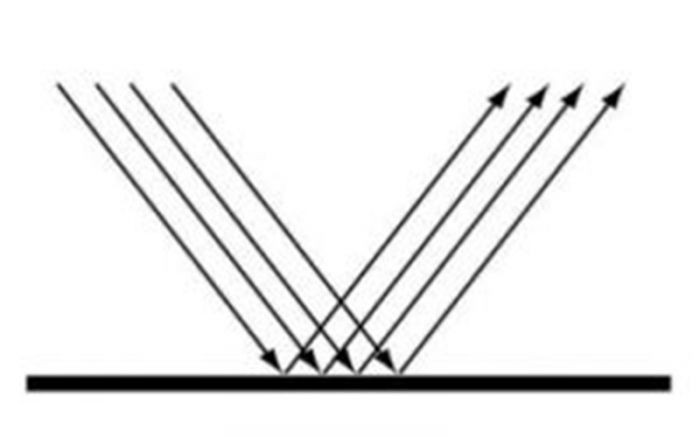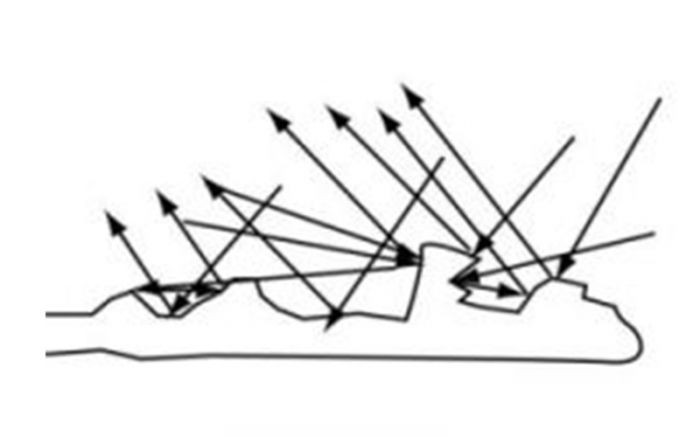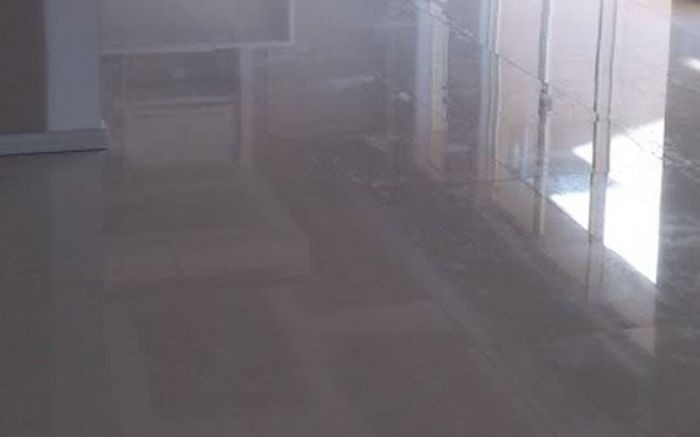Luigi's answer: This is most likely a common case of optical hazing on Polished Porcelain
Over the years we have had a number of customers asking the same question. It is possible the tiles are just greasy or dirty or over sealed or have grout haze left on them and just need a good clean… or ... it could be due to optical hazing.
WHAT IS OPTICAL HAZING? AND WHAT CAN BE DONE ABOUT HAZINESS ON THE TILES:
Optical hazing on polished porcelain tiles is not a new phenomenon; it has occurred in natural stone and the painting industry for hundreds of years. Many consumers have expectations that their polished porcelain floor is going to have a mirror like finish. A polished porcelain tile is not a mirror. When the surface of a polished porcelain tile is examined under significant magnification, small micro facets are always found. Light that strikes such micro facets reflects in a diffused manner giving a “Halo” or “Haze” effect.
- If a ray of light could be observed approaching and then reflecting off a mirror, the behaviour of that light as it reflects would follow a predictable law known as the law of reflection. The ray of light approaching a mirror is known as the incidence ray (R) The law of reflections states, “that the angle of the light rays striking a surface is equal to the angle of the reflected light”. (see figure 1)
- If reflected light is so predictable, then why does it reflect differently off different types of surfaces? Reflection off a smooth surface such as mirror or calm body of water known as specular reflection (see figure 2)
- Reflections off a rough surface such as honed or tumbled stone such as granite, limestone, marble, slate, sandstone and other types of stone is known as diffuse reflection (see figure 3)
Whether the surface is microscopically rough or smooth has a tremendous impact upon the subsequent reflection of a beam of light. A beam can be thought of as a bundle of individual light rays which are travelling parallel to each other. Each individual light ray of the bundle follows the law of reflection. When the bundle of light rays strikes a smooth surface then the light rays reflect and remain concentrated in a bundle upon leaving the surface (Fig 2). On the other hand, if the surface is microscopically rough, the light rays will reflect and diffuse in many different directions (Fig 3).
THE AMOUNT OF HAZE VISIBLE DEPENDS ON SEVERAL FACTORS, FOR EXAMPLE:
The number of light sources and their positions i.e. a single source of light would mean there would be a limited number of positions available to observe any haze. The same surface when lit by a number of light sources will increase the amount of haze visible because there are more opportunities to see the reflected light. Another example is bulk sunlight shining through large windows and doors early in the morning; the large volume of sunlight will increase the amount of “Haze” visible.
The size of the clay particles and other ingredients of the tiles can also have an effect on the amount of haze visible.
HOW TO REDUCE OPTICAL HAZING
Optical hazing is not a defect, it is an inherent characteristic of the tiles stemming mainly from the mineral content and their manufacture. It has no effect on the technical performance of the tiles. No amount of cleaning, sealing or polishing will make a definitive difference to the appearance of the tiles as it is something that occurs during their manufacture and not caused by any subsequent cleaning or treatment of the tiles surface. Using a light coat of a penetrating sealer may help to deepen the colour and fill some of the open micro – facets, which are contributing to the refraction of light effect and therefore disguise the effect. Apply a light coat of sealer to the surface of the tiles and leave for 5 – 10 minutes. Buff using an absorbent cloth while the solution is still wet on the surface to work the solution in and remove excess from the polished surface. For maintenance avoid strong detergents, use a mild ph detergent such as Aquakleen Floor Tile Cleaner. Always buff polished surfaces with a dry towel after cleaning.
Please note that this information is offered as general guidance only and without guarantee. Your specific circumstances may need an alternative approach. In case of doubt, any process should be tried out in an inconspicuous area before general application.
Important to note: as per BRANZ guidelines, inspection of work should be taken from a 'normal' position.
- Standing at a distance of 2m or more from surfaces
- an ubostructed viewing angle no less than 45 degrees
- under uniform non-critical lighting of 500 lux - a typical indoor light level






